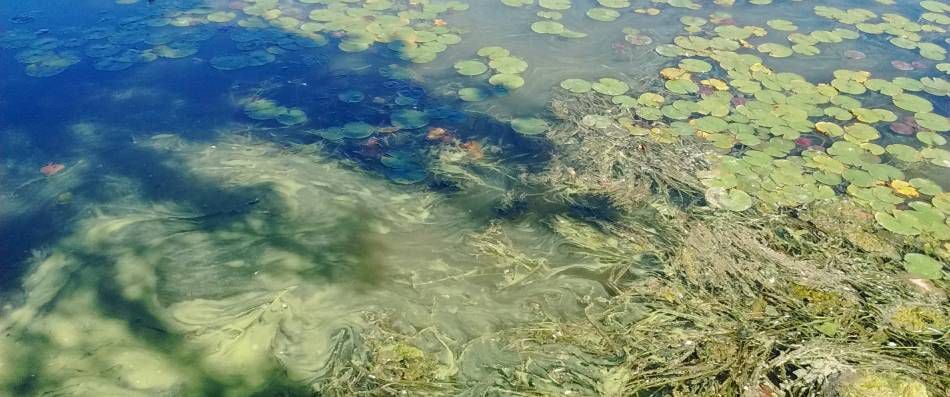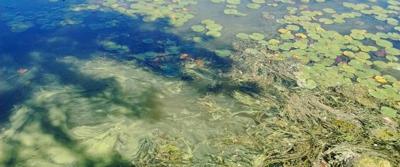AUBURN — The last time Owasco Lake's watershed rules and regulations were updated was 1984. The Owasco Lake Watershed Management Council is looking to change that.
There were no blue-green algae blooms reported in the lake in the 1980s, and not only has that changed dramatically over the last few years, but toxins from the blooms made their way through the treatment process into the water glasses of more than 45,000 Cayuga County residents this summer.
One of the ways council members are hoping to reduce nutrients in the lake, which may then reduce the number of blooms, is to strengthen the watershed's rules. Currently there are 13 rules that the Owasco Watershed Inspection Program is in charge of enforcing. They deal with an array of things from limiting where cemeteries can be placed to the disposal of manure.
But updating the rules and regulations of a watershed involves state approval, something that so far looks difficult to get.Â
People are also reading…
Blue-green algae, also known as cyanobacteria, is a filmy, paint-like scum that has been dis…
Steve Lynch, director of the county's Planning and Economic Development Department, said the council will schedule a public meeting to present what the rules and regulations are now, and present some ideas of how they could be strengthened. He hopes that by involving the public with this process as much as possible, the state Department of Health will be more likely to agree to some upgrades. Neighbors in the Canandaigua Lake watershed have tried to upgrade their rules and regulations after failing septic systems were causing problems, but they have so far been unsuccessful.
"Canandaigua attempted this, and it took a lot of time, and people were very concerned about this," Lynch said. "This isn't going to just be the farm community. It's going to be the development community. It's going to be homeowners building homes. It's going to be towns' operations, village operations. So there are a lot of stakeholders that could be impacted by this."
A sub-committee of the council has so far examined how Owasco Lake's rules are different from Skaneateles Lake's. Skaneateles Lake has stricter guidelines because the city of Syracuse does not filter its water during the treatment process.
At a council meeting on Tuesday, members looked at the differences between the two lakes, and discussed some potential regulations from Skaneateles that could be implemented in Owasco. Some of those things included prohibiting disposal of snow or ice into the lake or a watercourse, restricting the amount of de-icing material used, and restrictions on handling and disposing human sewage could be bolstered as well.
There were a few regulations around farming examined, too. Manure, for example, could have to be applied with a New York State Natural Resources Conservation Service standard or conform with a nutrient management plan. Storing fertilizer openly could be prohibited, and fertilizer may not be applied in a way that conflicts with water quality standards.Â
The council also looked at differences between the two lakes' sediment control measures. Skaneateles does not allow land-disturbing activities that expose 5,000 or more square feet of soil unless erosion and sediment production measures are in place. Public highway construction activity cannot result in erosion or sediment productions either.
Eileen O'Connor, director of the county's Environmental Health Division, suggested a few more rules and regulations that Skaneateles does not have. Some of those included prohibiting dumping leaf and lawn debris into the water, and not allowing clear-cut openings on lakefront property. O'Connor said she will present more specific ideas to the council in January.
Doug Kierst, director of the county's Soil and Water Conservation District, asked whether the agriculture community had been a part of discussions about the rules and regulations since it makes up about 70 percent of the watershed.
"A lot of these are going to have direct impact on them," Kierst said.Â
Lynch said first the council will work on holding a hearing to discuss what's currently in place. He did not specify a timeline for this process, but said he wanted to make sure the council was thorough in its outreach.Â
"I think that's going to be the key for the success of this," he said.Â
Besides looking at the rules and regulations, the county is moving forward with its Nine Element Watershed Plan. Michele Wunderlich, associate planner, said contractor bids closed last week, and the county received one proposal. That proposal was from Liz Moran, an ecologist and president of EcoLogic. She has worked on several area water quality projects before. Wunderlich said she hoped to have a contract in place with Moran at the beginning of 2017.
Staff writer Gwendolyn Craig can be reached at (315) 282-2237 or gwendolyn.craig@lee.net. Follow her on Twitter @gwendolynnn1.




























